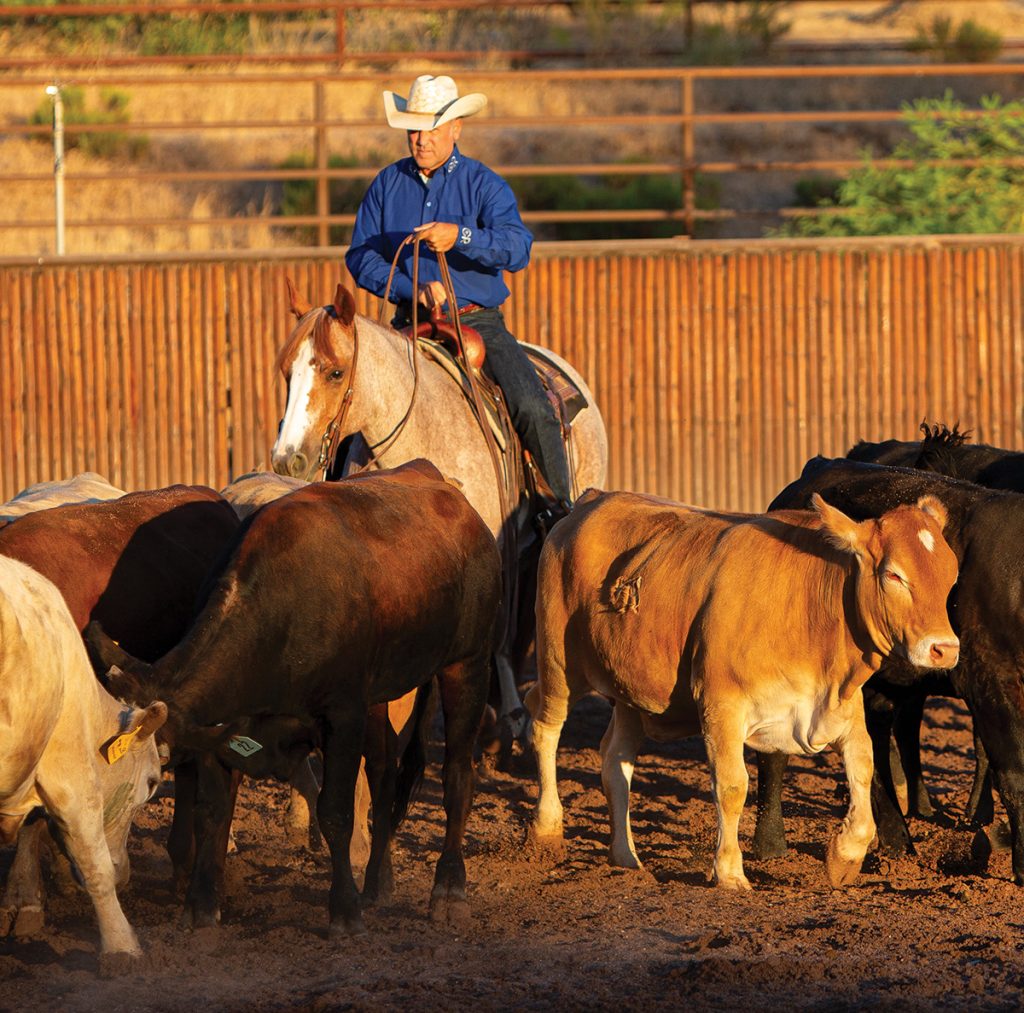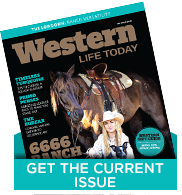Hard-stopping, fast-turning, cow-savvy horses make their living in the show pen and on the ranch doing the same maneuvers: working cattle. The horses destined for the show pen simply have some showmanship tricks up their sleeves, but the premise for the competitive event called cutting has stayed the same since the inception of the sport, which dates back to 1898 and the Cowboy Reunion in Haskell, Texas.

One horse and rider, a herd of cattle, and the desire to showcase the horse’s ability to athletically keep one cow from reentering that herd are the simple grounds for the cutting horse event. Today, cutting horses can sell for an average of $50,000 at the annual Western Bloodstock National Cutting Horse Association (NCHA) Futurity Sales, where in 2023, 83 horses sold for more than $100,000 each. It’s a far cry from trading horses on the ranch, but the cutting community has grown to include weekend cutting competitions, regional and national championships in multiple associations, and the famed NCHA Futurity, which awards the Open champion $250,000 each December. The excitement and allure of cutting continues to draw riders from all backgrounds.
From Pasture to Show Pen
“Yeaahhhhhhhhhh!” is a familiar cheer rising up out of the thunderous crowd inside the Will Rogers Coliseum in Fort Worth, Texas, during the NCHA Open Futurity Finals in December. Competitors are vying for their share of the purse and a place in history. While the NCHA is not the only cutting horse association, it is the original foundation for the event and was incorporated in 1946.
Headquartered in Fort Worth, the National Cutting Horse Association produces a New Member Directory to help newcomers to the sport understand where cutting came from and how to participate.
According to The Directory, “The first record of cutting as an arena spectator event came at the Southwestern Exposition and Fat Stock Show in Fort Worth, Texas, when a cutting horse exhibition was added to the annual rodeo in 1919. It became a competitive event the following year. By 1946, there were so many cutting horse contests being held, under so many different sets of conditions and rules, that a group of 13 cutting horse owners met at the Southwestern Exposition and Fat Stock Show and decided to form an association to establish standard rules and procedures for holding such competition.”
And that was the beginning of the NCHA. Fort Worth is the birthplace of the association and the location of the NCHA’s major events: the Super Stakes, Summer Spectacular, and the Futurity, but nearby Weatherford, Texas, has been nicknamed the “Cutting Horse Capital of the World.” It’s where many cutting horse trainers reside, training what they hope will be the next Futurity champion.
Showing Savvy
In a cutting run, a rider will walk their horse into a herd of cattle and smoothly cut one out, working several cattle one at a time in the two minutes and thirty seconds allotted. To do this well, you’ll want to learn the rules of the event, good cattle handling, and how to sit your athletic horse. In 2024, Al Dunning was honored with induction into the NCHA Hall of Fame. His history with the sport is lengthy, and includes time as a trainer and showman, as well as a judge.
“As a competitor and a judge, we look at how to control the cow as the No. 1 factor, meaning that as the cow goes, you want to try and stop it in the middle third of the arena, turn it and stop it the other way, then stop it again in the middle third of the arena,” says Dunning.

A group, or herd, of cattle is held at one end of the arena by “turnback” help, or four riders positioned like corners of a box. After a rider drives one cow out of the herd, the turnback riders work to ensure none escape the herd to interrupt the run. The turnback riders at the top corners keep the selected cow from escaping far away from the horse and rider, allowing the horse to show off his ability.
“I love to see a horse with excellent form on a cow and the rider and horse working as a unit,” says Dunning. “I love to see a horse ‘birddog’ a cow—running and stopping with his ears pricked forward. I love to see a horse really get low, then run and stop with a cow, and it still gives me a little chill when I see a horse doing it right with their athletic ability and cow sense.”
To rank each horse and rider, the judge will mark down pluses or minuses throughout the performance on their score card.
A Winning Cutting Run
Nearly every weekend across the U.S., a cutting horse event can be found. As you observe a cutting competition, there are some key things to watch for that make a good run.
To stay out of the penalty box, riders focus on keeping the cow in the middle third of the arena, or right in the middle of the herd, or face a point deduction. If the horse and rider fail to keep the cow in the middle of the arena, and the back fence is used to stop the cow, that is a 3-point penalty. If the cow gets back to the herd and past the horse and rider, the team is penalized 5 points. Other deductions occur when a horse is too aggressive to the cattle, biting, kicking or pawing, which is a 3-point penalty.

Finally, watch the riders guide the horses with their feet and slight rein movements to keep from notching more penalties.
“When you have your reins long, it helps you to keep from getting a 1-point penalty, because if you make contact with the bit, it’s a penalty,” says Dunning. “When you have your reins long, you don’t make any contact with the bit, and it shows your horse can steer on a loose rein, neck rein, and guide up to the cow without excessive reining.”
A great cutter can walk quietly in the herd (a plus on the score card), succinctly cut a cow, then work with speed and athleticism to keep it in the middle. That is a winning run, and makes the crowd go wild.
Find a Cutting Horse Association
Breed organizations such as the American Paint Horse Association and the American Quarter Horse Association offer cutting horse classes at their competitions, but there are also multiple cutting horse associations dedicated solely to this sport. If you’re interested in learning more or participating in cutting, they’re a good place to start.
◆ National Cutting Horse Association
◆ American Cutting Horse Association
◆ World Cutting Horse Association
◆ United States Cutting Horse Association
This article about cutting appeared in the April 2024 issue of Western Life Today magazine. Click here to subscribe!


